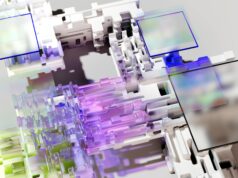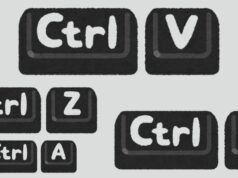Introducing Intel RealSense ID Q1 – the world’s first facial recognition device developed by Intel Corporation. This revolutionary product can recognize a user’s face in seconds, allowing them to access their devices and accounts with just a glance securely. This blog post will discuss how Intel RealSense ID Q1 works, what makes it special, and how it can help make your life simpler and more secure. Read on to learn more about this amazing facial authentication device!
What is Intel RealSense ID Q1?
Intel RealSense ID Q1 is a facial authentication device that uses your face as a biometric key to unlocking your computer. It employs 3D imaging technology to create a high-resolution, three-dimensional map of your face, which is then compared to a stored reference image. If the two images match, the device unlocks your computer.
The RealSense Q1 is designed to be used with Intel’s Authenticate software, which allows you to set up multiple levels of security. For example, you could require that the device not only recognize your face but also verify that you are looking at the camera before it unlocks your computer. This could prevent someone from holding up a picture of you in front of the device and gaining access to your system.
The RealSense Q1 is currently available for purchase in select markets.
Intel RealSense ID Q1 ATM | How Does RealSense ID Work
The Intel RealSense ID Q1 ATM is a facial authentication device that uses 3D imaging to identify users. It can be used in conjunction with a traditional 2D camera to provide an added layer of security, or it can be used as a standalone device.
How does Intel RealSense ID Q1 work?
RealSense ID uses an infrared (IR) camera and dot projector to create a 3D image of your face. This image is then compared to a stored template to verify your identity. The template is created during enrollment and includes over 100 facial features.
RealSense ID also includes liveness detection to prevent spoofing attacks. Liveness detection uses IR light to illuminate your face and look for subtle changes that occur when you blink or move your head. These changes are very difficult to replicate, making it nearly impossible to spoof your identity.
RealSense ID is a facial authentication device that uses Intel’s RealSense technology. It captures three-dimensional images of faces and compares them to a database of known faces to verify identity.
The device can be used for a variety of applications, such as logging into devices, accessing buildings, or making financial transactions. It is designed to be more secure than traditional two-dimensional facial recognition systems, as it is less likely to be fooled by photographs or videos.
To use RealSense ID, users first need to create an account and enroll their face. This can be done through the RealSense ID app or website. Once enrolled, users can hold the device up to their face to authenticate.
RealSense ID uses an infrared sensor to capture a 3D image of the user’s face. It then uses artificial intelligence algorithms to compare this image to the enrolled database of faces. The system is designed to work in a variety of lighting conditions and with different types of glasses and hats.
Intel claims that RealSense ID has a false positive rate of 1 in 1 million, which means it incorrectly identifies someone as the wrong person just once in a million attempts. The company also says that it cannot be spoofed by photographs or videos, as the 3D image captured by the infrared sensor is unique to each individual.
RealSense ID is currently available on select Intel-powered devices, including laptops and tablets.
Pros and Cons
There are several advantages and disadvantages to using Intel RealSense ID Q1 as a facial authentication device. On the plus side, RealSense Q is much more accurate than traditional 2D facial recognition systems. It can quickly and easily identify an individual from a database of faces, even when that person is wearing a hat or glasses. Also, Intel RealSense ID Q1 is difficult to spoof, meaning it is much more secure than 2D systems. Finally, Intel RealSense Q1 is easy to use; look into the camera and it will unlock your device.
On the downside, RealSense Q is still a new technology, which means that it may be less reliable than traditional 2D systems. Additionally, because it uses 3D data, it requires more processing power than 2D systems, which could slow down some devices. Finally, RealSense Q’s accuracy can be affected by changes in lighting conditions; in low light, for example, the system may have difficulty identifying individuals.
Alternatives
There are a number of other facial authentication devices on the market that offer similar features to the Intel RealSense ID Q1. Some of these include the Face ID feature on the iPhone X and devices from companies like Microsoft and Samsung.
The Microsoft Azure Kinect was designed as a facial authentication device that uses infrared technology to detect and recognize faces in order to authenticate users. It also provides depth-sensing capabilities and gesture recognition for user interactions with applications.
Samsung’s Iris Scanner is another facial authentication device that utilizes an iris scanner to identify individuals based on their unique pattern of the iris of the eye. It is able to identify users from up to 2 meters away accurately.
Finally, Facial Recognition software, often used in combination with cameras, can also be used for facial authentication. This type of software uses advanced algorithms to compare facial features from photos or videos with a database of known identities, such as passports or driver’s licenses.
Why Should You Use Intel RealSense ID Q1?
Some features of Intel RealSense ID Q1 are given below. To know, read all of them. Have a look:
RealSense ID works everywhere
Facial authentication is a convenient way to quickly and securely unlock devices and access apps, but it only works if the technology is supported by your device. That’s why Intel developed RealSense ID: a facial authentication solution that works on any device, regardless of operating system or platform.
RealSense ID uses an advanced 3D depth-sensing camera to create a detailed map of your face, which is then compared to a reference image stored in the security module. The reference image can be enrolled using either a 2D photo or a 3D scan, making it easy to use RealSense ID with existing devices and systems.
Once your face has been authenticated, RealSense ID allows you to quickly unlock your device or access protected apps with just a glance. And because RealSense ID uses standard encryption methods, your data is always safe and secure.
RealSense ID is designed to work for everyone.
RealSense ID is designed to work for everyone, regardless of their age, gender, or race. The technology uses an infrared camera and 3D depth sensor to create a three-dimensional map of your face, which is then compared to a database of known faces to verify your identity.
The advantage of using RealSense ID over traditional methods like passwords or PIN codes is that it’s much more difficult to spoof your identity with this technology. That means that you can be confident that only you will be able to access your devices and data, even if someone else knows your password or PIN.
Setup is quick and easy. All you need is a compatible Intel RealSense ID Q1 camera. Once you’ve set up the camera, you can start using RealSense ID for authentication by simply looking at the camera. There’s no need to remember any additional passwords or PIN codes, which makes it more convenient and secure than traditional methods.
So whether you’re using a laptop, desktop, tablet, or smartphone, RealSense ID can help keep your data safe from prying eyes.
RealSense ID is adaptable.
The RealSense ID is designed to be an adaptable facial authentication device. It can be used in a variety of settings, from retail stores to office buildings. The device is easy to use and can be set up in minutes. It is also highly accurate, with a false positive rate of less than 1%.
RealSense ID is easy to use.
With just a few quick and easy steps, you can be up and running with RealSense ID. First, create an account and download the app. Then, connect your device to the app and follow the on-screen instructions. That’s it! You’re ready to start using RealSense ID for all your facial authentication needs.
RealSence ID secures all desired entries.
As society becomes increasingly digitized, the need for strong security measures grows. Intel’s RealSense ID is a facial authentication device that uses 3D imaging to secure entryways. This technology can be used in a variety of settings, from offices to schools to airports. RealSense ID is more accurate than traditional 2D facial recognition systems, and it’s also harder to spoof. This makes it an ideal solution for businesses and organizations that need to protect their premises.
Key features of Intel RealSense ID Q1
1. High-accuracy facial recognition
2. Live liveness detection
3. Secure facial authentication
4. Hands-free operation with voice prompts and commands
5. Robustness against spoofing attacks and poor lighting conditions
6. Easy integration into existing systems and applications
7. Friendly user experience with visual indicators of successful identity verification
8. Fast capture times for quick user authentication
9. Supports Windows Hello, FIDO2, IWA, SAML protocols, and more
10. Low power consumption for extended battery life.
Some FAQs
How much is Intel RealSense ID Q1?
The cost of Intel RealSense ID varies depending on the product and quantity. For example, a single-unit development bundle costs $99 USD, while bulk orders of 1,000 units or more could be subject to different pricing.
Q: What is the Intel RealSense ID Q1?
A: The Intel RealSense ID Q1 is a facial authentication device that uses 3D depth-sensing technology to scan your face and verify your identity.
What is Intel RealSense used for?
Intel RealSense is a technology developed by Intel for use in artificial intelligence and computer vision applications. It uses cameras, depth sensors, and microphones to enable machines to recognize and interact with their environment through autonomous navigation, facial recognition, gesture tracking, object scanning/tracking, 3D mapping/modeling and more. This technology has been applied to robots for navigation purposes as well as augmented reality systems for gaming and entertainment.
Q: How does it work?
A: The device uses an infrared laser to create a 3D map of your face. This map is then compared to a stored reference image, and if the two matches, your identity is verified.
Q: How accurate is it?
A: The RealSense Q has an accuracy of up to 99.99%, making it one of the most accurate facial authentication devices on the market.
Q: Is it secure?
A: Yes, the RealSense Q is highly secure. All data collected by the device is stored locally on the device itself and is not shared with any third-party servers.
Is Intel RealSense discontinued?
No, Intel RealSense is not discontinued. It is an active product line and remains one of the leading platforms for computer vision applications. Intel continues to invest in the development and improvement of RealSense technology.
Conclusion
Intel RealSense ID Q1 is a revolutionary facial authentication device that has the potential to revolutionize identity verification and security. It combines facial recognition, 3D sensing, and advanced machine learning algorithms to create an accurate and secure system for authenticating identities in a variety of circumstances. With its convenience, accuracy, and robust security features, Intel RealSense ID Q1 offers both individuals and businesses an affordable solution for verifying their identities quickly and securely with minimal effort required on their part.
KEEP READING: Introducing Intel RealSense ID Q1: Facial Authentication Device!- How to fix a stuck iOS setup assistant: iPhone & iPad guide
- Miocreate Review: The Premier Destination For Multiple Face Swap Editing
- Baggot Street Mercy’s Login Features
- Smart Square UAB Login: A Comprehensive Guide
- The Top 10 AI Humanizers and Anti-AI Detectors to Enhance Your Content



















